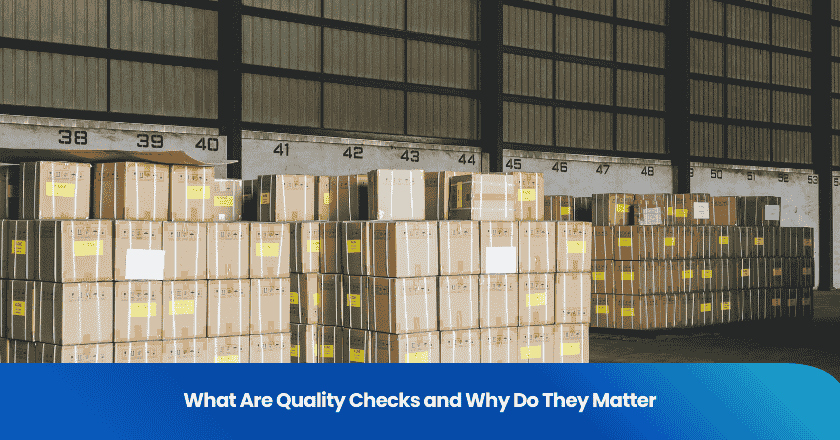
AQL defines the maximum number of acceptable defects in a batch during product inspection. Inspectors use AQL sampling to select a specific sample size aql from each lot. They examine the sample and record the number of defects found. If the defects stay within the established quality limits, the inspection passes. AQL sampling helps teams maintain consistent quality standards and supports reliable inspection decisions. Product inspection relies on clear AQL criteria to ensure that quality remains measurable and manageable.
Key Takeaways
- AQL sets the maximum number of defects allowed in a product batch to decide if it passes inspection.
- Defects are classified as critical, major, or minor, each affecting product quality differently and influencing acceptance limits.
- AQL charts help inspectors choose the right sample size and defect limits based on batch size and inspection level.
- Using AQL sampling saves time and resources by inspecting a sample instead of every item while keeping quality standards.
- Setting proper AQL levels balances product risk, customer expectations, and inspection costs to maintain consistent quality.
What Is AQL?
Definition of AQL
AQL stands for "Acceptable Quality Level." This term describes the maximum number of defects that can be considered acceptable during an inspection. Inspectors use AQL as a standard to decide if a batch of products meets the required quality. The acceptable quality level sets a clear limit for defects, making it easier to judge if a shipment passes or fails. In product inspection, AQL helps teams focus on measurable results. By using AQL, inspectors can check a sample from a batch and determine if the number of defects stays within the allowed range. This process ensures that inspection results remain consistent and objective.
Note: AQL does not guarantee zero defects. Instead, it defines how many defects are allowed before a batch is rejected.
Importance in Quality Control
AQL plays a critical role in quality control. It provides a practical method for managing inspection and maintaining product standards. When companies perform product inspection, they rely on AQL to set clear expectations for quality. This approach helps teams identify batches with too many defects before products reach customers. By using AQL, inspectors can quickly spot problems and take action to improve quality. The system also supports fair and repeatable inspection decisions. For example, if a batch contains more defects than the AQL allows, the inspection fails, and the batch does not move forward. This process protects both the company and the customer from poor-quality products.
AQL also helps companies balance inspection costs and quality goals. Inspectors do not need to check every item. Instead, they use AQL to select a sample size that represents the whole batch. This method saves time and resources while still catching most defects.
Defect Classifications
Critical, Major, Minor Defects
Quality control teams use defect classifications to organize and evaluate product issues. They sort defects into three main categories: critical, major, and minor. Each type affects product quality and safety in different ways.
- Critical defects pose a risk to user safety or violate regulations. These defects can cause harm or make the product unusable. Inspectors must reject any batch with even one critical defect.
- Major defects reduce the product’s function or appearance. Customers may find these defects unacceptable, but they do not usually cause harm. A batch with too many major defects will not pass inspection.
- Minor defects do not affect product use or safety. Customers may notice these issues, but most will still accept the product. Inspectors allow a limited number of minor defects in each batch.
A clear understanding of these defect classifications helps inspection teams make fair decisions. Teams use these categories to set inspection standards and communicate expectations to suppliers.
Impact on AQL Inspections
Defects play a central role in AQL inspections. Inspectors count the number of defects in each sample and compare the results to the allowed limits. The type of defect determines how strict the acceptance criteria must be.
For example, a single critical defect will cause a batch to fail, while a few minor defects may still be acceptable.
AQL charts provide specific limits for each defect type. Inspectors use these charts to decide if a batch meets quality standards. The number of defects found in the sample must not exceed the allowed amount for each category. This process ensures that only products with an acceptable level of defects reach customers. By following these guidelines, companies maintain consistent quality and protect their reputation.
Sample Size AQL
AQL Charts
AQL charts serve as essential tools in quality control. These charts guide inspectors through the process of aql sampling by providing clear instructions for selecting the correct sample size aql and determining acceptance criteria. Each chart displays a matrix that matches lot size with sample size codes. Inspectors use these codes to find the number of units to inspect and the maximum number of defects allowed.
A typical aql sampling table, such as the one based on ISO 2859, organizes information in a user-friendly format. The table lists lot sizes in one column and sample size codes in another. By referencing the chart, inspectors can quickly identify the correct sample size aql for any batch. The chart also shows the acceptance and rejection numbers for different aql levels. This structure ensures that aql sampling remains consistent and objective across all inspections.
Tip: Always use the latest version of the aql sampling table to ensure compliance with current standards.
Determining Sample Size
Determining the correct sample size aql involves several steps. Inspectors follow a systematic approach to ensure accurate aql sampling and reliable inspection results. The process includes:
1. Identify the Lot Size
Inspectors begin by counting the total number of units in the batch. This number determines which row to use in the aql sampling table.
2. Select the Inspection Level
The inspection level reflects the strictness of the inspection. Common levels include General Inspection Levels I, II, and III. Level II is the most widely used for standard aql sampling.
3. Find the Sample Size Code Letter
Using the lot size and inspection level, inspectors locate the corresponding code letter in the aql sampling table.
4. Determine the Sample Size
The code letter points to the exact number of units to inspect. This number represents the sample size aql for the batch.
5. Choose the AQL Level
Inspectors select the aql level for each defect category. For example, they may use 0.65% for critical defects, 1.5% for major defects, and 4.0% for minor defects.
6. Reference the AQL Chart
The aql chart shows the maximum number of defects allowed for each defect type at the chosen aql level.
Practical Example Using ISO 2859
Suppose an inspector receives a batch of 2,000 units. The team selects General Inspection Level II. According to the aql sampling table, the code letter for this lot size and inspection level is "K." The table indicates that the sample size aql is 125 units.
The inspector chooses an aql of 1.5% for major defects. The aql chart shows that for a sample size of 125 and an aql of 1.5%, the acceptance number is 5, and the rejection number is 6. If the inspector finds 5 or fewer major defects, the batch passes. If the inspector finds 6 or more, the batch fails.
This example demonstrates how the aql sampling table and chart work together to guide the inspection process.
Acceptance Quality Limit
The acceptance quality limit defines the maximum number of defects allowed in a sample before rejecting the batch. This value ensures that only batches meeting the required quality reach customers. The acceptance quality limit appears in the aql chart as the acceptance number for each defect category.
Aql sampling relies on this limit to maintain consistent standards. Inspectors use the aql sampling table to find the acceptance quality limit for each inspection. The table shows the highest number of defects permitted for the selected sample size aql and aql level. If the number of defects exceeds this limit, the batch does not pass inspection.
Aql sampling tables help teams identify the permissible number of defects for any batch size. By following the acceptance quality limit, inspectors ensure that products meet the desired quality. The process also supports efficient resource use by focusing on representative samples rather than inspecting every unit.
Note: Many organizations use an aql calculator to speed up the process of finding the correct sample size aql and acceptance quality limit.
Aql sampling forms the backbone of modern inspection practices. By understanding how to use aql charts, determine sample size aql, and apply the acceptance quality limit, inspection teams can uphold high standards and deliver reliable results.
AQL Sampling in Practice
AQL Inspections
AQL inspections form the backbone of many quality control systems. During these inspections, teams use aql sampling to evaluate a batch of products. Inspectors select a sample based on the aql sampling plan and examine each unit for defects. They record the number and type of defects found. The results determine if the batch meets the aql limits set for that product.
Aql sampling allows inspectors to make decisions without checking every item. This approach saves time and resources. For example, in a product inspection, an inspector might check 80 units out of a lot of 2,000. If the number of defects stays within the aql limits, the batch passes. If the defects exceed the limits, the batch fails. This process ensures that only products meeting the required quality reach customers.
Note: Aql inspections rely on clear procedures. Teams must follow the aql sampling plan exactly to ensure reliable results.
Setting AQL Levels
Selecting the right aql levels is a critical step in any aql sampling plan. Different products and industries require different standards. For example, medical devices often need stricter aql limits than consumer goods. Teams must consider the end use of the product, customer expectations, and regulatory requirements.
Aql levels define the maximum percentage of defects allowed in a sample. The most common levels include 0.65%, 1.0%, 1.5%, and 2.5%. Lower aql levels mean stricter quality control. Higher levels allow more defects but may reduce inspection costs.
| Defect Type | Typical AQL Level |
|---|---|
| Critical Defects | 0.65% |
| Major Defects | 1.5% |
| Minor Defects | 4.0% |
Teams should review product risk, customer feedback, and industry standards before setting aql limits. They should also adjust these limits as needed based on inspection results and changing requirements.
Choosing Limits
Choosing the correct aql limits involves balancing risk, cost, and customer satisfaction. Teams must decide how many defects are acceptable for each defect type. They use the aql sampling table to find the acceptance and rejection numbers for each batch.
To interpret aql levels and select limits:
1. Assess Product Risk
Products with higher safety risks require lower aql limits. For example, food packaging or electronics may need stricter controls.
2. Review Customer Expectations
Some customers demand zero critical defects. Others may accept a few minor defects if the price is lower.
3. Check Industry Standards
Many industries publish recommended aql limits. Teams should follow these guidelines when possible.
4. Analyze Past Inspection Data
Teams can use previous inspection results to adjust aql limits. If a supplier consistently meets quality goals, teams may consider less strict sampling.
Tip: Always document the chosen aql limits and communicate them clearly to suppliers and inspection teams.
Tips for Implementing AQL Sampling
- Train inspectors on the correct use of aql sampling plans and charts.
- Use the same aql sampling plan for similar products to ensure consistency.
- Double-check calculations when determining sample size and acceptance numbers.
- Avoid changing aql limits without proper review and approval.
- Keep detailed records of all inspections and defects found.
Common mistakes in aql sampling include using the wrong sample size, misclassifying defects, or ignoring the aql sampling plan. Teams can avoid these errors by following standard procedures and reviewing results regularly.
Aql sampling, when applied correctly, helps organizations maintain high quality and reduce the risk of defective products reaching customers. By understanding how to interpret aql levels, set appropriate limits, and implement effective sampling, teams can build a strong foundation for quality control.
AQL, sample size, and AQL charts form the foundation of effective inspection processes. Teams that understand these concepts can make better decisions and maintain high standards. Applying these methods helps organizations deliver reliable products. Readers can explore ISO 2859 or industry guidelines for deeper learning. Mastery of these tools supports strong quality control in any operation.
FAQ
What does AQL stand for in quality control?
AQL stands for Acceptable Quality Level. It sets the maximum number of defects allowed in a sample before rejecting a batch. Inspectors use AQL to decide if products meet quality standards.
How do inspectors choose the right sample size?
Inspectors use AQL charts to match the lot size and inspection level with a sample size code. The code determines how many units to inspect from the batch for accurate results.
Why do different products have different AQL levels?
Different products have unique risks and customer expectations. For example, medical devices require stricter AQL levels than toys. Teams set AQL levels based on product use, safety, and industry standards.
Can AQL sampling guarantee zero defects?
AQL sampling does not guarantee zero defects. It helps teams control quality by limiting the number of defects in a batch. Some minor defects may still appear in accepted batches.
How is AQL used in textiles?
AQL in textiles helps inspectors check fabric quality by setting limits for defects like stains or weaving errors. Teams use AQL sampling to ensure textile products meet industry and customer requirements.
Grow your business with TradeAider Service
Click the button below to directly enter the TradeAider Service System. The simple steps from booking and payment to receiving reports are easy to operate.



